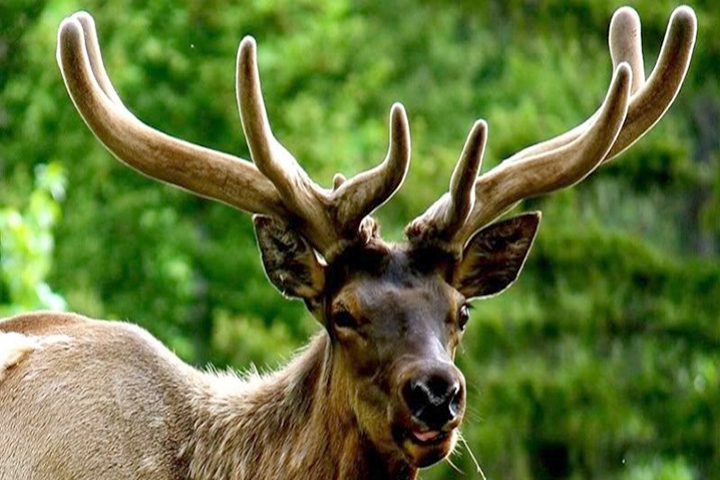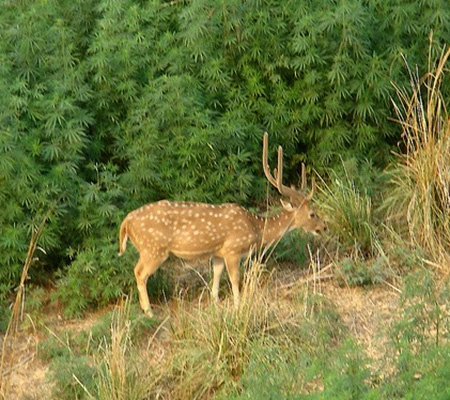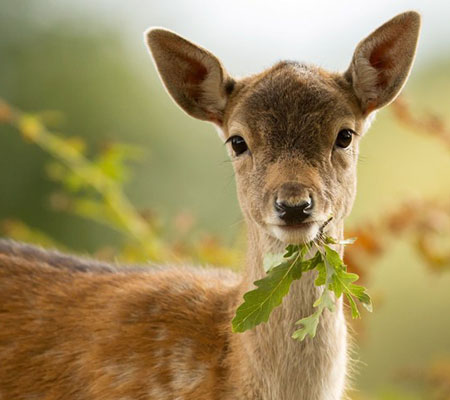
Deer and Your Marijuana Plants
When you decided to grow your marijuana plants outside, you probably didn’t anticipate the threat deer posed to them. Since deer are herbivores, their diet is heavy in the consumption of all kinds of plants, including marijuana. By nature, they like to consume their food in areas with dense tree cover as opposed to more open areas. Therefore, if your marijuana growth is in an open area, it should be fine. However, if it’s in a more rugged, wooded area, beware! You need to be vigilant for a deer problem that may put your crop in peril!
Signs of a deer problem
Fixing a Deer Problem
Signs of a deer problem

Because deer are nocturnal creatures, they like to venture into gardens in the middle of the night when fewer humans are out and about. It’s tough to anticipate potential destruction of your precious plants including its leaves, buds and seedlings until it’s already too late, and damage is done.
In fact, most destruction is discovered the next morning only after the deer have already reaped their terror. It’s only then when trying to find out who destroyed your plants, does one discover a deer’s hoof tracks, deer droppings and the remnants of plants like leaves, buds, and seedlings that they have left behind. More about deer in my free grow bible.
Fixing a Deer Problem

Because, if given the chance, they will eat all of your plants; the only way to try to prevent damage to your crop is to institute measures to keep the deer away in the first place. Some proven techniques to follow in keeping them away include:
Adding a chain length or wood fence around your plants
When building a fence, you should aim for it to be at least eight feet high as deer do not jump higher than six feet in the air. It should be constructed from durable, sturdy materials. Be careful to leave no room between the slats or under them where a deer could slide through or crawl under respectively. And, because a fence is hard to miss, you should make sure that if you’re going to put up one, you do so in an area in which it’s legal to grow marijuana so as not to draw unnecessary attention to your crop.
Adding an electric fence around your plants
One way to ensure the dear doesn't to go near your crop is not only to enclose it within a fenced off area but to do so using an electric fence. When using an electric fence, most growers elect to “train” wild deer to stay away by taking peanut butter and placing it either on a wire or piece of foil and attaching it to an electrical component of the fence. When a deer is “trained” in such a way, every time they go to lick the peanut butter off the wire or foil, they will get shocked. Although the first time a deer is shocked, it doesn’t hit home the point that they want to stay away from the fenced in garden, they get the point after the second and third shocks for sure.
Installing motion sensor high-wattage lighting around your plants
Not only are deer nimble creatures that can easily contort their bodies to wiggle under any gaps between the ground and slats of a wood or chain length fence, but they’re easily spooked as well. In fact, they jump high when panicked - up to eight feet in the air. Therefore, another thing they’re afraid of is either someone approaching or the spontaneous appearance of bright light. Installing motion sensor lights, placed in strategic locations around your plants to deter the deer is a particularly effective approach. You want to be careful, however, when placing them around your crop to point them in an away direction instead of at your plants. Pointing lights in the direction of your crop can adversely impact your plant’s life cycle and ruin your harvest.
Installing “scarecrow sprinklers.”
If installing a fence or light is not right for you, you might want to consider installing a “scarecrow sprinkler,” a type of irrigation system that blasts an intruder with sudden, high-pressure water when they intrude.
If some of these scare tactics are too involved or costly for you, there are also some inexpensive or free options that we can recommend as well. These include:
Predator and household repellants
Deer have a particularly keen sense of smell. Because of this, it shouldn’t come as a surprise that there are some different types of repellants that can be purchased in-store or online or can even be collected up from around your home that can also be utilized to successfully repel deer. Different cost-effective repellant options that are detestable to deer include:
- Strategically placing human hair from your hairbrush around and atop your crop
- Placing human urine in a jar and leaving it around your crop
- Spraying the urine of one a deer’s predators including coyotes, foxes, or bobcats around the crop. It can be easily purchased online and re-applied after every period of rainfall
- Creating a “rotten egg” mixture utilizing a ratio of 2 parts egg to 8 parts water and drenching plants with it
- Placing crushed garlic inside nylon socks and hanging it on the on the trees within your crop
- Taking scented bar soap, like Dial or Lifebuoy, drilling a hole in it, creating a hanger for it using fishing line, and tying it up next to your plants
- Hanging up fabric softener sheets from trees
- Placing mothballs inside nylon stockings and hanging them up
No matter what repellent you use, it’s important to realize that deer have a strong scent memory. Therefore, it’s important that after you use a certain type predator or household repellant technique for a while, that you rotate it out for something different. It’s also worth your while to combine these predator and household repellants with the light or sprinkler options referenced above for full effectiveness.
Your plants are most vulnerable to destruction by deer in their pre-maturation state. Because cannabinoid levels of plants increase as they mature, they become particularly distasteful to deer at their later stages of growth.
By following the deer-repelling strategies above, you are well on your way to protecting your crop from destruction.
Thanks for reading. Don’t forget to download my free grow bible and happy growing!
Robert
www.ilovegrowingmarijuana.com













